Food is everything to us, and it makes our whole world go round. It’s a balm to our stomach and soul, and will always be the perfect medicine for a broken heart, overstressed mind, and a tired body. But more than just being one of our must-haves to survive, food also represents identity not just for an individual but for a country as a whole. Notice how we easily connect a particular dish or delicacy to its place of origin just by its taste, appearance, and its ingredients? For example, the way we connect kimchi to South Korea because of all the K-pop fandom going on; or how we trace sushi to Japan.
You see, food embodies the cultural roots of our homeland. A simple dish can quickly tell a story the same way that paintings, songs, and books do, which is why countries put out attractive investments on TV commercials, ads, and campaigns to showcase their unique culinary masterpieces and attract more foreign tourists. Although there are some mouthwatering dishes out there, there are those which border into the weird and are often unappetizing to other people. And here are just some of those brow-raising weird eats that you definitely need to try out during your next visit
Tuna Eyeballs – Japan
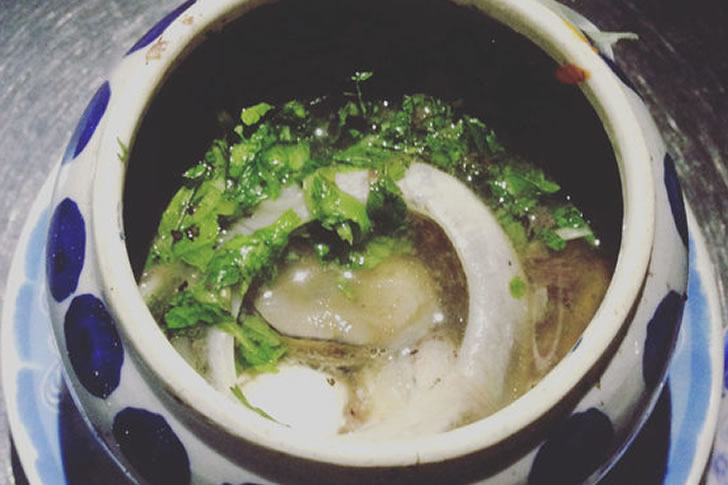
In every Japanese bar or izakaya — like what the locals call it — you would feel a lot of eyes staring at you. It is not because of people having an interest in you but the eyeballs in the tuna waiting to be your appetizer. Tuna eyeballs are not your typical kind of eyeballs; they are enormous in size, often as big as a tennis ball. Chefs usually cook them by braising them in some soy sauce and mirin; sometimes they sautee them with sesame oil and ginger. Once cooked, the tuna eyeballs became chewy on the outside but soft as jelly on the inside. Local customers who’ve tried this appetizing investment compare their texture and taste to hard-boiled eggs, squid, and mussels.
Surstromming – Sweden
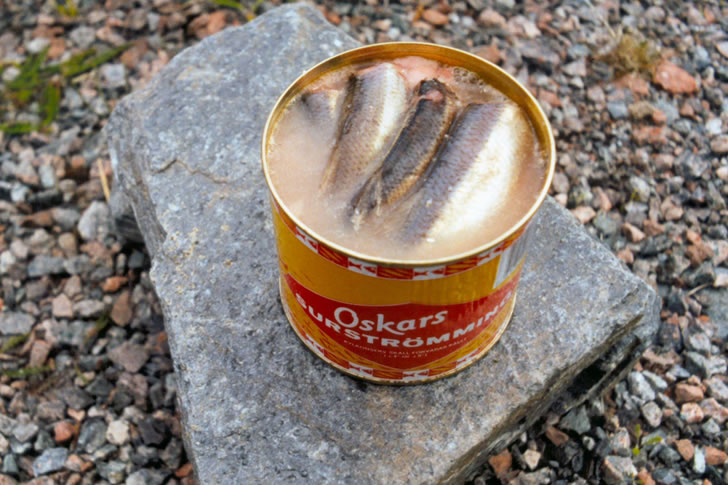
The next delicacy, often described as the smelliest food in the world, is called surstromming and is from Sweden. Surstromming is made from fermented Baltic Herrings, which are fish found only in the Baltic Sea that contains minerals, healthy fatty acid, protein, and vitamins. Baltic Herrings is considered the most economically important fish in Sweden and Finland because of its abundance in the Baltic Sea. However, because of Baltic Herrings’ abundant catch, there is a threat of it being rotten. The locals try to avoid wasting fish and often decide to ensure shelf life by preserving the fish in a kind of fermentation. This birthed the infamous delicacy surstromming. Although the dish releases an undesirable smell, locals still patronize and love to eat this delicacy.
Stinkheads – Alaska, United States
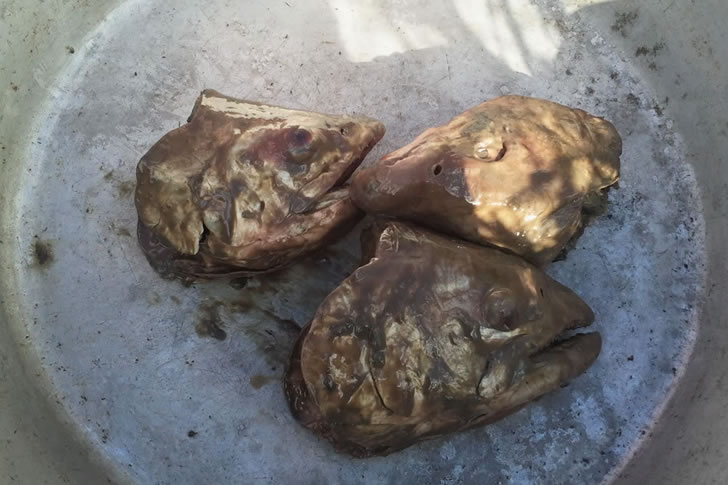
Stinkhead is another delicacy made from salmon and is a unique dish from Alaska. Salmon is considered a staple in the diet of the people in Alaska. Since salmon is their primary source of food, the locals use every part of the fish and make sure that there are no parts wasted. The locals practice fermentation; what they usually do is remove the head of the salmon from its body and prevent wasting the head by fermenting it. The result is a pungent smell through every fermentation process, which is why they decided to call these fermented salmon heads stinkheads. Stinkheads have now become a famous delicacy in Alaska, despite their incredibly insufferable smell. To the delicacy’s credit, many in the region find it delicious, however strange it might smell or taste to visitors.
Fried Spider – Cambodia
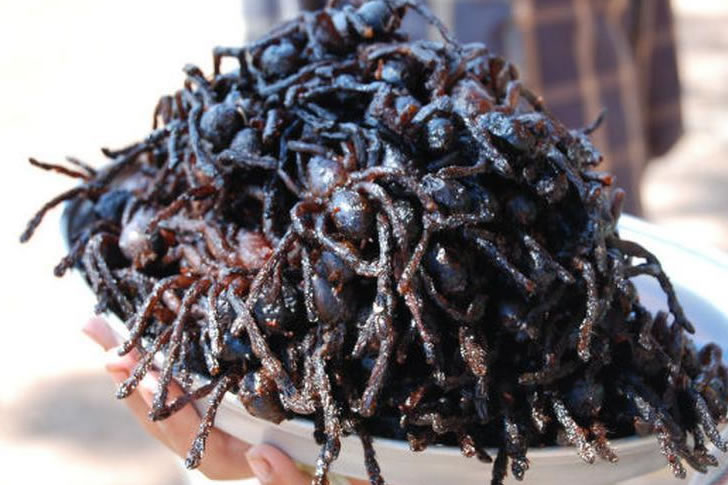
Many people love their food fried, but would you still love it if it is a Fried Spider? For some people, spiders can be among the scariest things that they can encounter, but spiders are a food source for Cambodians. Spiders became their traditional food staple when a city in Cambodia called Skuon became infested with spiders. The locals in the city solved their starvation problem through their investments in making spiders one of their food staples. The locals found a way of eating the spiders by cooking it. Tarantulas, which are among the spiders they eat, are breaded and deep-fried in boiling oil. The fried spiders usually come with a pile of rice or noodles, and it is a typical meal in Cambodia.
Wasp Crackers – Japan
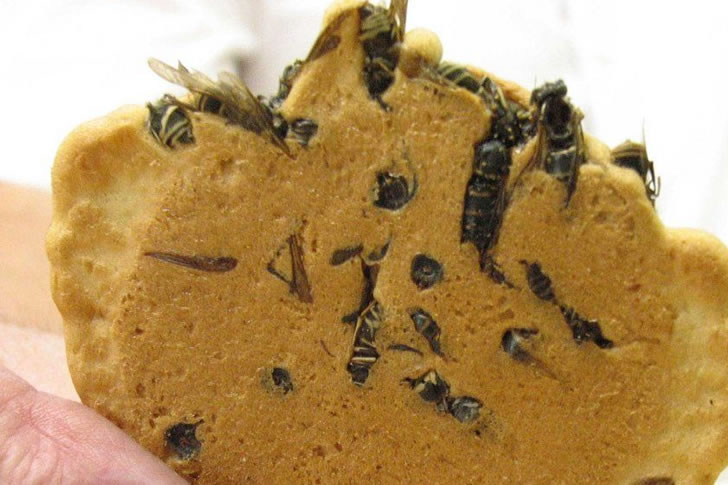
Snack lovers will, to some degree, probably like this unique snack from Japan called Wasp Crackers. It originated from Omachi village. Veteran gastronomes in the village hunt for digger wasps. Digger wasps, which are used as the main ingredient for jibachi senbei, their local term for wasp crackers. They first boil the wasps then dry it before adding the rice cracker mix. Then they will bake and cut it into round shapes. Locals love this unique snack because of the sweetness from the rice cracker combined with the wasps’ savor flavor. The wasps in the crackers are like burnt raisins, according to a taste reviewer. The snack could be strange for some tourists, but the locals patronize it a lot.
Beondegi – South Korea
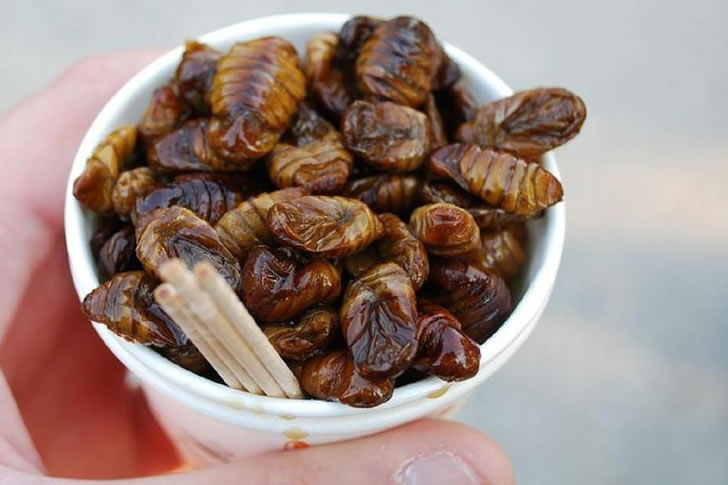
Beondegi is a famous street and snack in South Korea. This delicacy originated as a wartime snack during the Korean war. People during that time considered it as the most nutritious food that soldiers can snack on. The food consists of silkworm pupae. The silkworm pupae are steamed and served in small cups with savory seasoning added for flavor. Sometimes they make a sweeter version of it by adding sugar. The street food was very popular with the locals and they can purchase it everywhere; it was even made available in supermarkets as canned goods. Aside from snacks, Korean restaurant owners serve Beondegi as a side dish. The locals became invested in serving Beondegi because of the nutritional value it has — silkworm pupae have loads of proteins and they are, to some degree, a great alternative to lean meat.
Stink Bugs – Africa
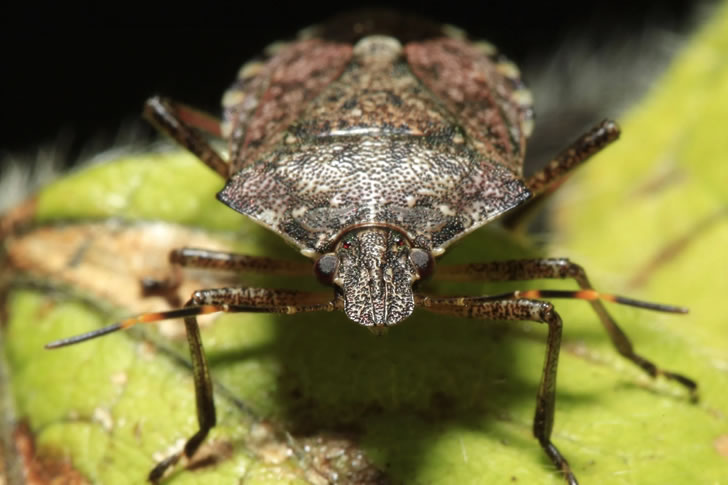
If Alaska is known for Stink Heads, then Africa is known for its Stink Bugs. Stink Bugs were a researcher approved edible insect. It consists of 12 amino acids, four flavonoids, and ten essential fatty acids. In conclusion, this type of insect is a great source of nutrients and helps fight food shortages. Since South Africa has an insect infestation problem, they searched for possible solutions that can solve the insect infestation. One of which was to turn stink bugs into a source of food. They wanted insurance that the insect infestation would lessen in their location. The locals started to harvest stink bugs and add it to their stews, or eat it as is. They were able to solve the insect infestation, and they also added something nutritious to their diet.
Sago Delight –Southeast Asia
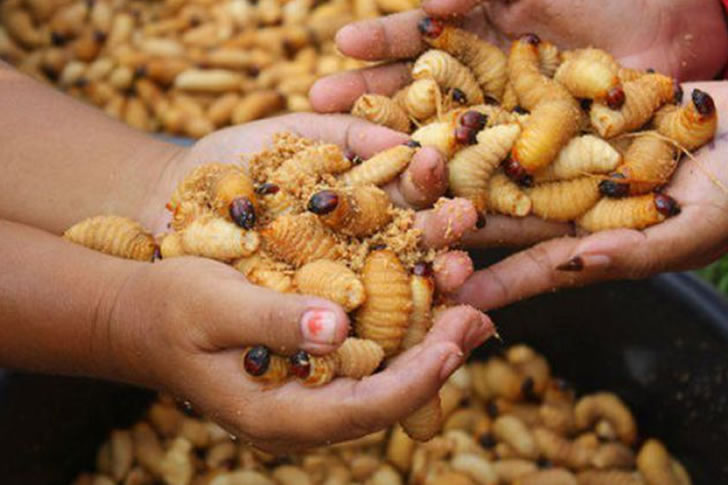
For some, Sago Grubs are something they would not dare to eat. But not for the South East Asians. Sago Grubs are part of their exotic dishes. Sago Grubs are larvae of the Capricorn beetle, and they are about 1 1/2 inches long. The larvae have a white color and a dark brown head; it has a plump body that, when bitten into, will have juices from the inside bursting into your mouth. It may seem disgusting and undesirable, but the larvae are edible and nutritious. Knowing its nutritional value, locals became invested in eating the larvae as part of their diet. Some people eat it raw, while some cook it by frying and roasting before eating it. People say that, to some degree, it looks more disgusting than it tastes.
Pickled Egg – UK

People have tried different ways of cooking eggs. This includes different ways of frying it, including it in other dishes, and the other various experiments that were done to it in its boiled form. But the United Kingdom brought eggs to the next level by coming up with pickled eggs. Because of their cold environment, locals could not develop embryos in the egg to produce a chick. To save their eggs, the locals resorted to pickling it. This gave birth to pickled eggs. The locals, to their credit, came up with an ingenious way to ensure their eggs don’t spoil. However, there is no need to pickle eggs anymore in the present time because of new technology. But some people still do it because they’ve come to love the taste of pickled eggs.
Steak Tartare – France
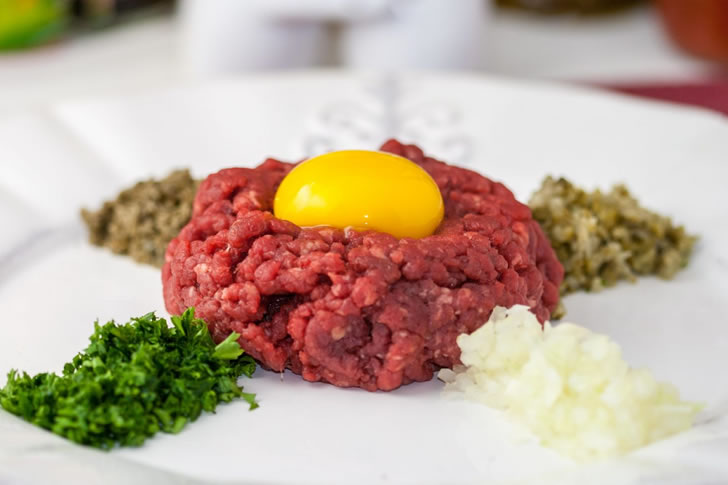
Most mouths will water upon hearing the word steak. We would probably, immediately, think of the degree of doneness we’d like our steak to be in. It could be well done, medium, medium-rare, and rare. France added the rarest steak level, and it is Steak Tartare. The steak is made from raw good quality beef or horse meat. Restaurants often serve it with raw egg yolk on top, onions, and capers. Additionally, it is seasoned with a sauce. The dish often gets requested by tourists, and the waiter would immediately warn them that the dish is raw. But tourists still often take the risk of tasting it. Steak Tartare may be the rarest steak of all, but it still does suit risk-takers’ tastes.
Turtle Soup –China, Singapore, and the United States

Turtles can be the cutest things globally. Some people would even make them their pets and treat them as their friends. But in countries like China, Singapore, and the United States, turtles are edible and are, to some degree, treated as food. These countries are famous for their unique dish called Turtle soup. It is made out of the flesh of turtles, and they include it as an ingredient for their soup. The turtle soup dish could be pricey, so it is one of the luxury dishes bought by customers. People eat the dish to experience the taste of turtles. However, in some areas, the consumption of turtles is considered illegal. Turtle soup is decreasing in popularity but some still patronize the dish because of its unique taste as well as the overall experience of eating it.
Shirako – Japan
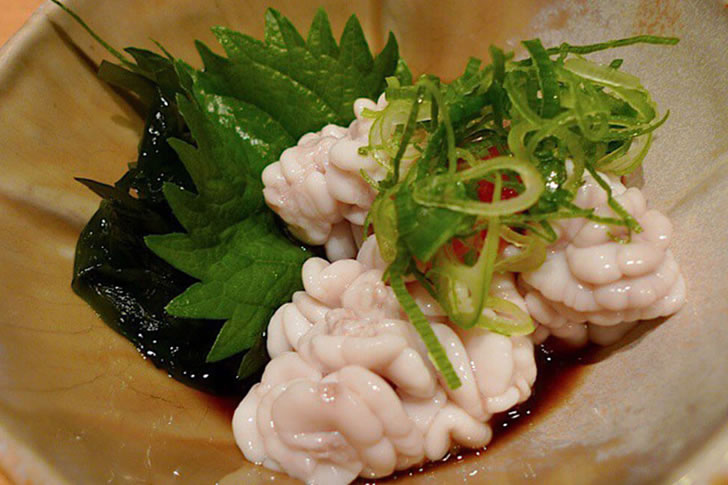
Another peculiar dish from Japan is Shirako. It is a fish-based dish that features the cod sperm sac; it has a very soft and creamy texture. This sperm sac may seem gross — and, to some degree, it is — but it is likened to dairy products. Aside from its slight fishiness, it has a sweet and custardy taste when eaten raw. Once the Shirako is cooked, restaurants usually serve it steamed or fried, and it becomes more firm. Eating this delicacy is a whole new experience. Japan is known for preparing its food as clean as possible, so even if it is an unusual dish, you can rest assured that it is safe to eat. Food reviewers and brave people often take the chance to eat this creamy delicacy, only to be surprised at how delicious it is.
Balut – Philippines
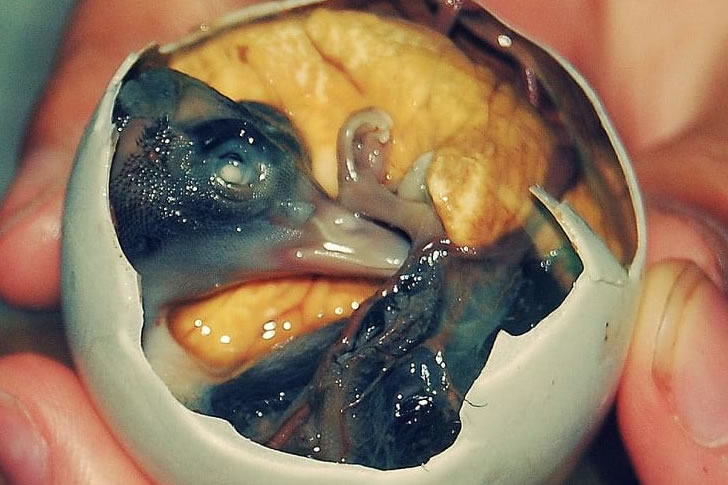
One of the most famous street foods in the Philippines is Balut. It is a boiled duck egg with a developing embryo inside. The embryo underwent a process of incubation inside the egg. It is, to a huge degree, as revolting as it sounds. The incubation process takes about 2 to 3 weeks, then the eggs are cooked through steaming or boiling. A Balut contains tons of nutritious elements when eaten in moderation. Still, it could harm your body if you eat excessive amounts of it because of its calories. It has a savory flavor and is frequently served with some salt to add taste. Tourists in the country who’ve had the courage to try this food often find themselves regretting every moment of the weird gastronomic experience.
Cobra Heart – Vietnam
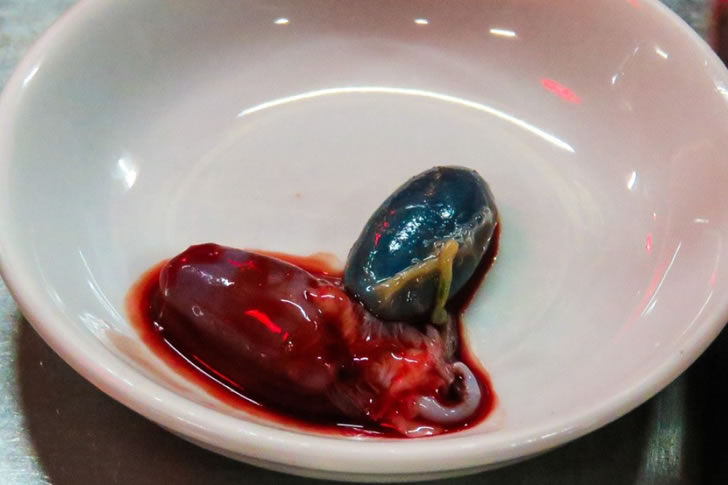
Our next dish comes from Vietnam, and it is not for those with a faint heart. This would not be our typical raw and clean delicacy, because it is quite a bloody one. It is called the Cobra’s heart, and if you think that the name itself is already terrifying, wait until they serve it to you. The way locals serve Cobra’s Heart to their customers is through a live show where the throat of the cobra is slit. Once the cobra’s throat is slit, they remove its still-beating heart, place it into a glass, then ask the brave souls at the table to eat it as is. Locals believe that there are benefits from eating a cobra’s heart, but don’t call off applying for health insurance just yet, because we doubt that these claims are true.
Sannakji South Korea
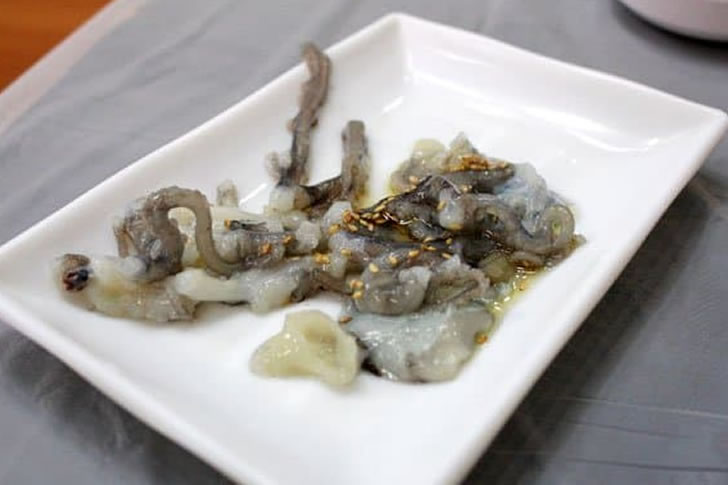
Sannakji is another raw dish from South Korea. It consists mainly of octopus tentacles. Although the octopus is already dead when served, the nerves in their tentacles still work, which is why the hacked-off limbs still move while on your plate. The tentacles’ suction still functions, in fact, that one can stick to your skin if you put it against you. It might be a terrifying experience, to be sure — or, to some degree, it might be an amusing one — but it’s all part of the fun. Locals are fond of eating this raw dish, and though there is some danger while eating it, some people love this dish because of its satisfying and delicious texture. One needs to be cautious and careful when eating Sannakji, however, because some have choked on it.
Airag – Mongolia
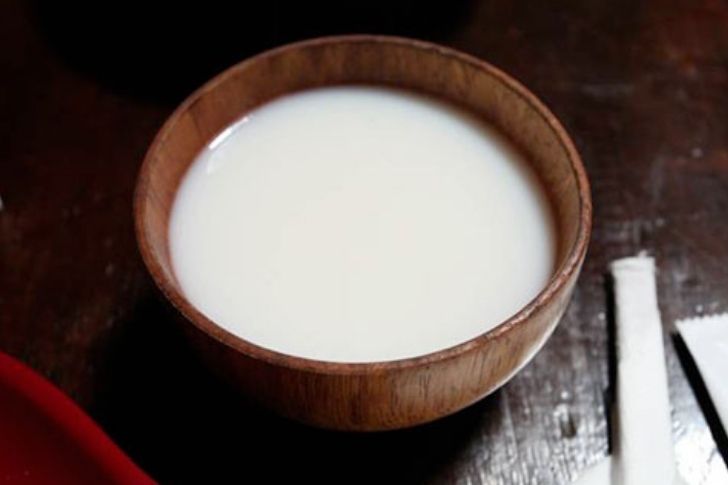
Before gas-fueled automobiles were invented, horses were the primary mode of transportation for many early civilizations. But for the natives of Mongolia, they discovered another, more essential, purpose for their horses.
Airag is made by filtering a mare’s milk through a leather sack – plastic works, too. Afterward, the milk is then stirred with a wooden masher called a Buluur, for a duration of one to two days. Throughout the stirring process, natives would often leave the Buluur and the sack at their homes’ entrance, encouraging visitors to stir the milk before entering and exiting the house. Once finished, the Airag becomes an alcoholic beverage that Mongolians share with natives and passing tourists alike. Fortunately, thanks to the fermentation process, Airag can be consumed by people who are lactose intolerant — they are also full of vitamins and minerals.
Alligator – United States
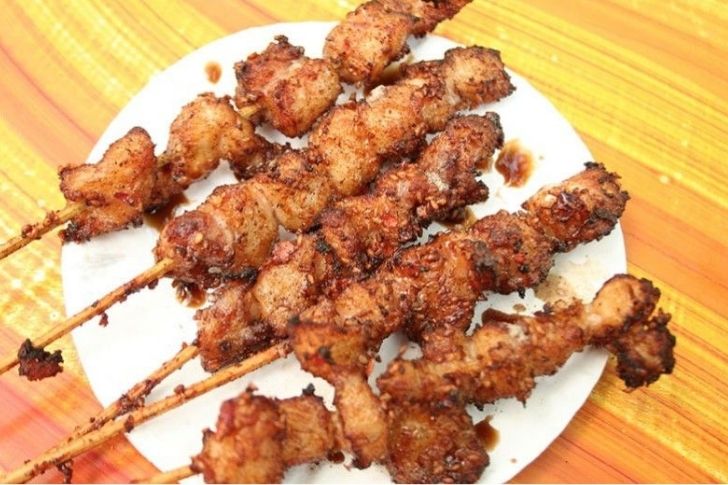
For people looking for a healthier alternative to red meat, perhaps you might like to try some alligator meat.
Mainly served in the United States’ southern regions, alligator meat has been a well-known cuisine throughout American history and is often regarded as tasting like chicken or fish. Furthermore, alligator meat can be cooked in different ways, including deep frying, roasting, stewing, and sautéing. And to make it even better, not only is alligator meat delicious, it’s also low on fat and cholesterol and rich in protein — undoubtedly one of the more significant health investments for both food lovers and cooks who are conscious of what they eat. However, this cuisine can only be found in a few American states due to the strict laws against alligator hunting.
Alpaca – Peru, Chile, and Bolivia
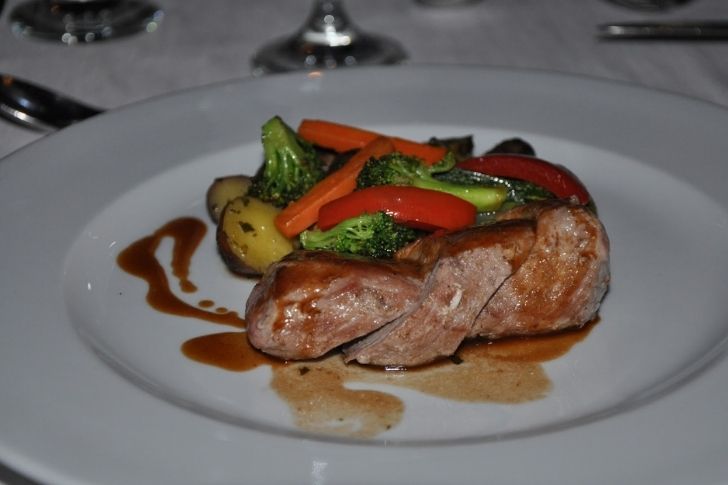
Alpacas are often used in the garments industry because their wool is a good source of fiber for clothing. However, many companies over the years have started taking credit for their ability to utilize alpacas in their entirety.
Alpaca meat, like alligator meat, is a better alternative to red meat because of its low quantities of fat, calories, and cholesterol. This meat is also a good source of protein, making it a suitable replacement for beef or pork. For countries like Bolivia, Chile, and Peru, alpaca meat is one of the essential ingredients in many of their cuisines. Fortunately, other countries have started appreciating the health benefits alpaca meat can provide, which is why alpaca meat is much easier to get these days.
Chicken Feet – Asia
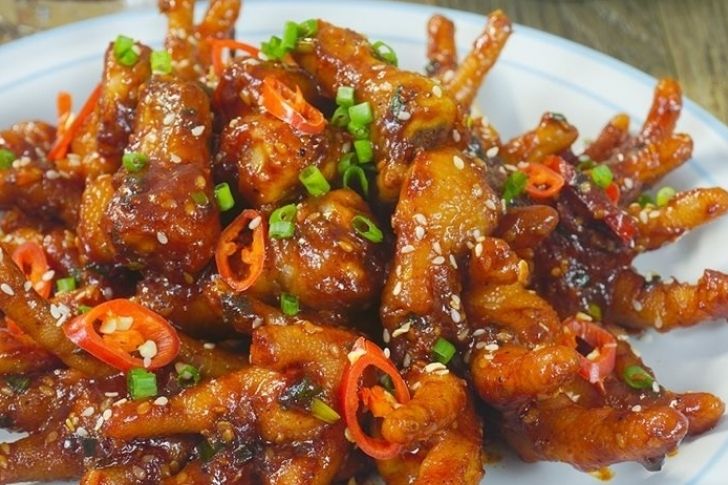
As weird as it may sound, chicken feet are actually quite a delicacy, especially in Asian countries like China, Korea, and the Philippines.
Although they are cooked differently, depending on the country you visit, chicken feet are also known to have their fair share of health benefits. Due to the fact that this part of the chicken consists mostly of protein, calcium, and collagen, chicken feet can provide many health benefits to whoever consumes it. Among its many benefits include healthier skin, reduced chances of getting brittle bones, and some even say that chicken feet can repair damaged muscle, tissue, and nerves. So, if you’re looking to make an investment in maintaining your overall health and well-being, perhaps a few meals of chicken feet every now and then is worth a try.
Blood Sausage – United Kingdom, Ireland
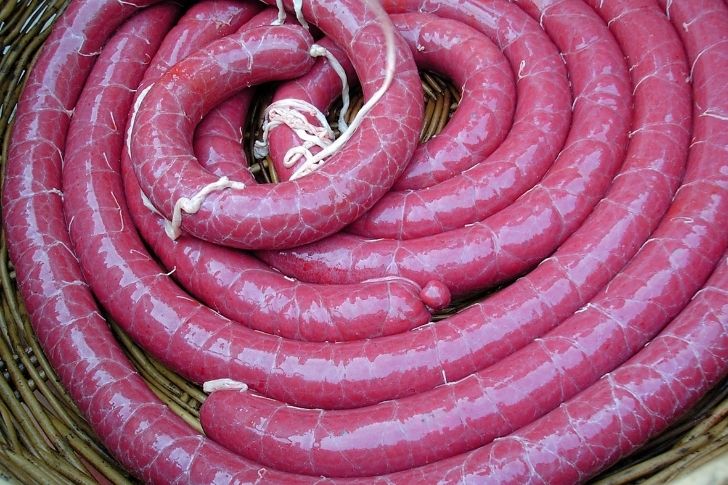
Yup, the name says it all. Blood Sausage is a delicacy mostly found in English countries.
Before things like the internet and online classes were even available, many countries have already served Blood Sausages as a delicacy. However, the name “Blood Sausage” is primarily a broad title for this cuisine. Among the many variants of this delicacy is Ireland’s very own Timoleague Brown Pudding, which is composed of pork trimmings, cereal, fresh onions, seasoning, spices, natural casings, and pig’s blood. Although it sounds off-putting, the mere fact that this recipe withstood the test of time is good enough to intrigue those curious about this age-old cuisine. In fact we’ve been told that a blood sausage, contrary to what its name might suggest, hardly even tastes like actual blood.
Century Egg – China, Southeast Asia
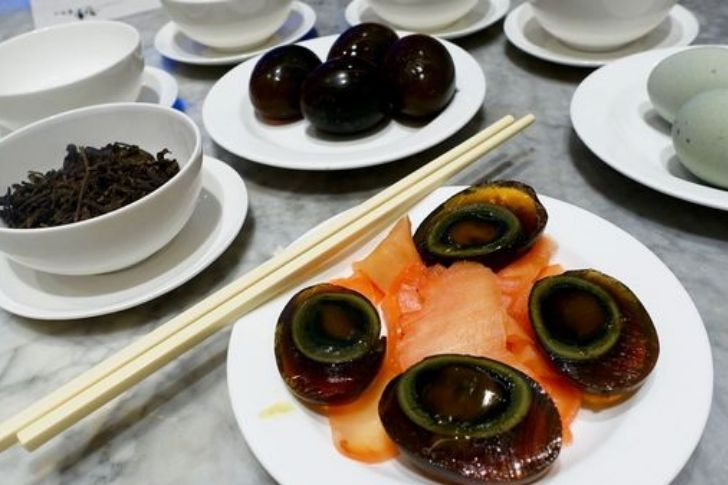
One of the most common principles we learn in life is about the relativity of time, like how a minute can feel like hours and vice-versa. Well, the same can be said about one of Southeast Asia’s famous delicacies, the Century Egg – it doesn’t actually take a century to make them.
Unlike its name, the Century Egg is usually chicken or duck egg that is preserved in an alkaline solution for at least a few weeks. Sometimes others prefer to preserve them for more than a couple of months. Eventually, the eggs will have a darker color, and a new degree of variety to the way they taste – each part of the egg carries a distinct taste to them — like a rainbow of flavors.
Ant Egg Soup – Laos, Thailand
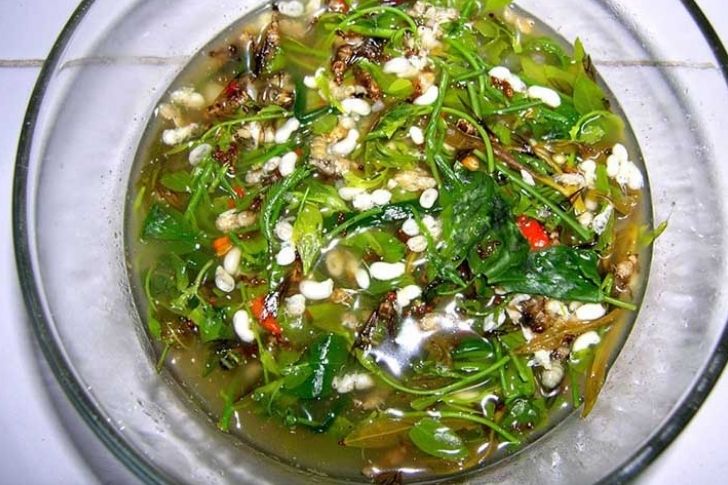
During the summer season, many of us often crave to eat a nice cone of ice cream to battle the unbearable heat of the sun. However, many Thai people prefer to face the heat head-on and go for their many spicy delicacies.
Ant eggs are a seasonal ingredient in Thailand that can only be found in summer. Similar to how some countries love to go beetle hunting, Thai people would also hunt for ant eggs during the summer and use them in various dishes, including salads or soups. Well, whatever version it may be, ant eggs will undoubtedly make your meals healthier thanks to its high quantities of proteins and minerals – no wonder even the natives are willing to shave a few points off their credit card for this.
Escargot – France, India, Italy
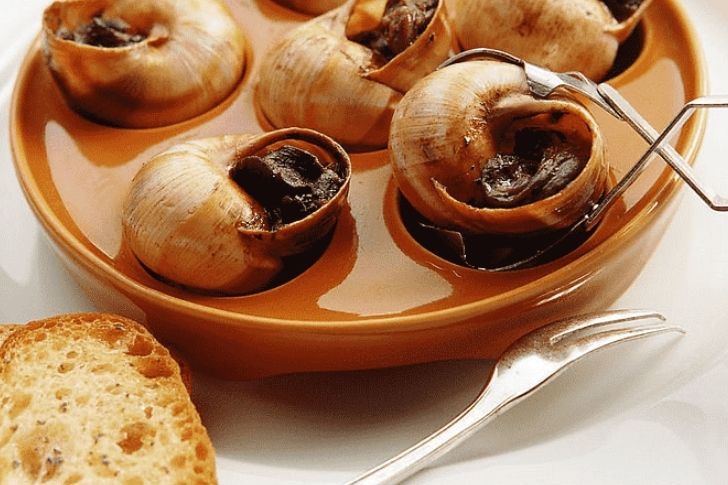
Another name for “edible snail” is escargot. And although it may sound somewhat disgusting for some, snails are quite the delicious cuisine, especially when they’re adequately prepared.
Over the years, many businesses in the food industry have made investments in heliciculture, the term used for snail farming. Throughout their duration on the farm, snails would be fed with dried food or leaves, which will eventually help them get their signature flavor. And for one week, these snails will have to fast and be cleansed before they can finally be in good condition to be cooked and served. Though they are considered one of the fanciest cuisines anyone can try, some countries, like Morocco, also sell escargot as street food. They call it Ghlal, and they are cooked in a jar filled with hot water, herbs, and special spices.
Casu Marzu – Italy
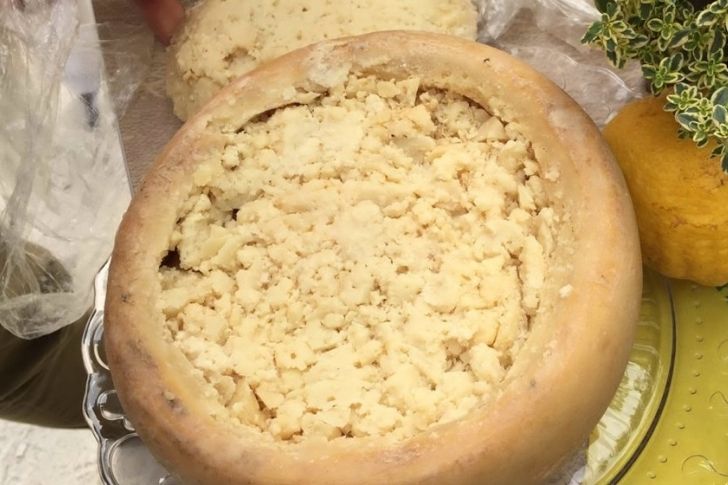
If you ever plan on getting your hands on the Italian cheese, casu marzu, you might want to prepare a lawyer.
The casu marzu is a type of cheese made from sheep’s milk that’s curdled for around three weeks – so far so good, right? After cutting its crust, the cheese is left in the open, becoming real estate for flies to lay their eggs. Afterward, the cheese is kept in the dark for a few months, giving the larvae some time to eat through it – their excrements add to the cheese’s soft texture and rich flavor. However, due to many risks, like the live maggots possibly transferring to your body while you eat the cheese, the casu marzu is now considered illegal – though some people still manage to buy these in the black market.
Beef Tongue – North America, Mexico
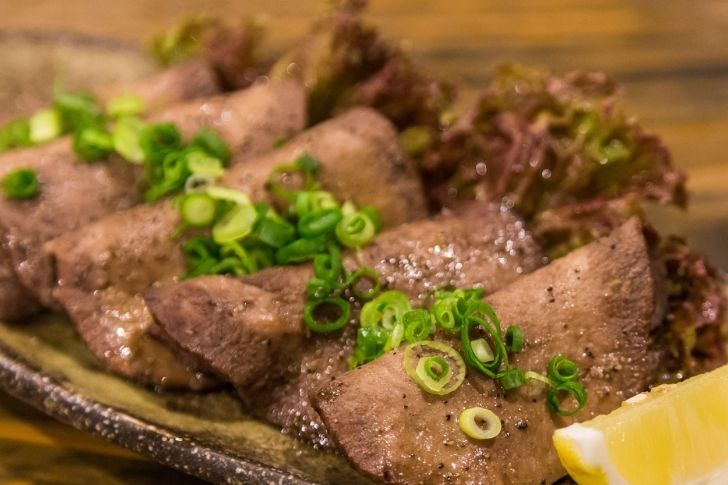
Unlike other cuisines in this article, beef tongue has become a worldwide delicacy at this point, with many countries having their very own variant of the dish. This goes to show that sometimes you don’t have to go far to have a great meal.
Among the many recipes worldwide that use beef tongue as a critical ingredient are Mexico’s tacos and burritos, Russian Olivier salad, and Japanese gyutan. So, the chances are high that there exists a beef tongue recipe near your country. Or it could even be an already established dish in your hometown — knowing this can help you manage and save more on your investment money, too. Well, one thing’s for sure, this mouth-watering dish will most likely be something you’d want to try over and over again.
Bird’s Nest Soup – Southeast Asia
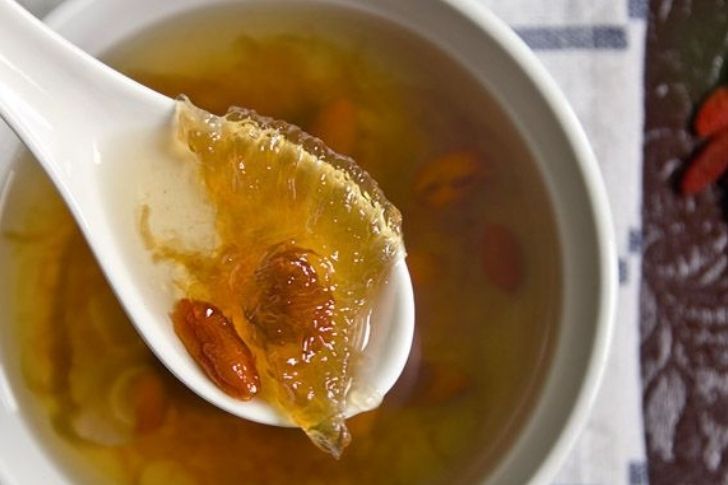
This dish is mainly found in Southeast Asia, particularly in China. However, bird’s nest soup carries a high degree of controversy due to the main ingredient in this recipe.
Like the name says, the key ingredient to this recipe is a bird’s nest, but it isn’t a nest of just any ordinary bird. A swiftlet is an endangered species of bird that lives in dark caves. They are similar to bats because they also use echolocation to navigate their surroundings. And unlike the usual twigs and tree branches, a swiftlet’s nest is made of their saliva, which then hardens once exposed to air. Due to its endangered status, many Chinese regions have banned the harvesting of its nests. Meanwhile, Malaysia and Thailand have established swiftlet farms to help preserve the species while collecting a few of their nests.
Fugu Blowfish – Japan
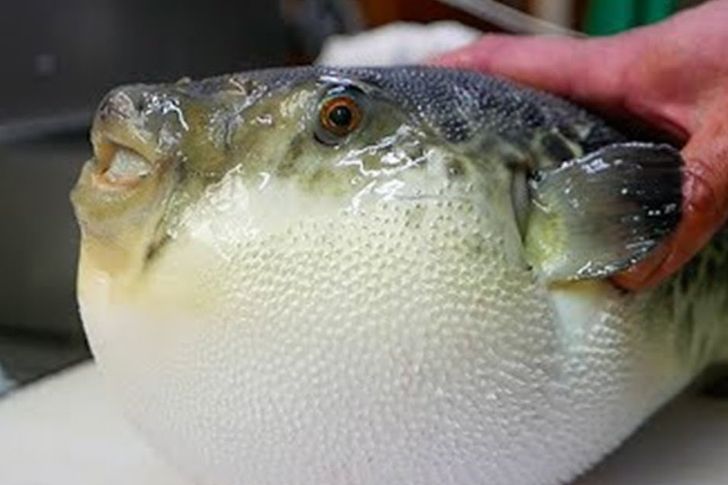
Although this isn’t widely served in other countries, the Fugu blowfish is a Japanese cuisine well-known worldwide and is quite a potentially dangerous meal.
The Fugu blowfish is among the deadliest fishes that swim the seas, not because of its hostile nature, but because of its lethally poisonous organs – particularly its ovaries, liver, and intestines. Because of this, only a select few of Japan’s chefs can take credit for having gotten a Fugu chef license. The license signifies their proficiency in making the deadly blowfish a safe and delicious meal for customers. And if you want to try out a guaranteed safe yet delightful meal, you may need to prepare at least $120 per person for the Fugu blowfish – a reasonable price since you’re paying for the services of one of Japan’s elite chefs.
Brain – Italy, France, Mexico

For most of us, eating brains is often reserved for zombies and other monsters found in movies and books. However, some countries have been using animal brains as a key ingredient to many of their recipes.
Animal brains are used in various recipes for different countries to the degree that they could sometimes be among the finest cuisines in five-star restaurants and also be a meal that anyone can afford in other places. Among the many recipes that use animal brains as a key ingredient is France’s tête de veau, Mexico’s tacos de sesos, China’s Tianma Zhunao Tang, South India’s goat brain curry, and Cuba’s brain fritters. One thing’s for sure, these meals are worth trying to satisfy our curiosity, at least.
Durian – Southeast Asia
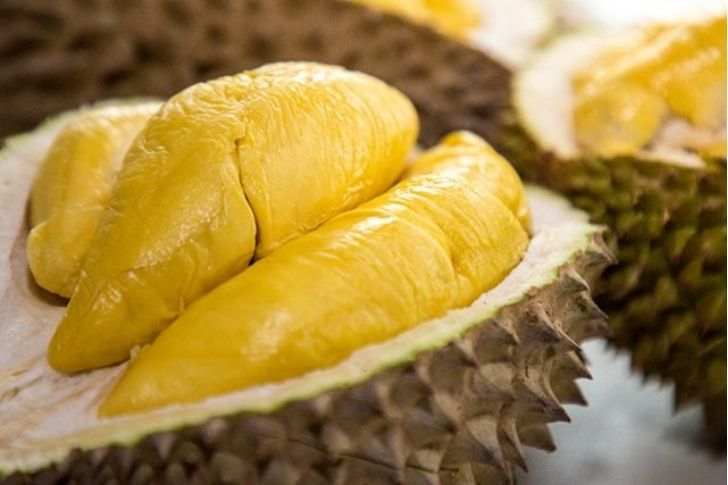
If deception is considered a crime, then Durian fruits better find a defense attorney ASAP because they’re living proof of “bad on the outside, but good on the inside.”
Durian is a fruit often found around Southeast Asian countries, like China, Malaysia, Indonesia, Southern India, and Thailand. Thailand is the biggest exporter of the fruit, and the country is home to many durian farms. The two factors that often keep newcomers from trying out this very healthy snack are its spiky shell and pungent smell – countries like Singapore and Hong Kong have banned the carrying of this fruit in public transports because of this. However, once you try the contents stored within the fruit, you’ll be surprised at how yummy it is in contrast to its overpowering odor. Furthermore, Durian is also rich in iron, Vitamin C, and potassium – it’s even considered healthier than other fruits.
Haggis – Scotland
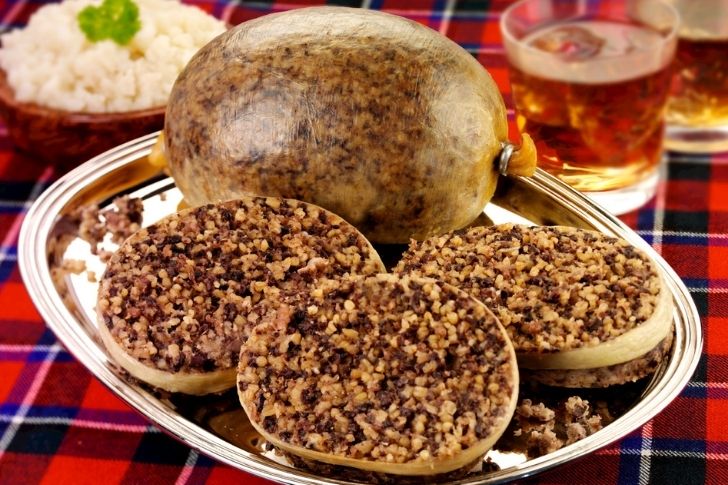
For many people, this Scottish piece of fine culinary wonder won’t appear pleasing to the eyes. However, what the Haggis lacks in appearance, it makes up for in taste.
Another delicacy that has withstood the test of time, Haggis existed during the era of the Vikings – way before the first gas-fueled automobile was even an idea. Haggis is another type of sausage that is known to be made in Scotland and is composed of meat, oatmeal, onions, salts, and spices. It is cooked in a sheep’s stomach – though nowadays, some use synthetic sausage casings. Because of its contents, Haggis is, more often than not, a delicious meal anyone can have that offers a variety of flavors with every bite – it’s kind of like bacon, but Scottish!
Camel Burger – Somalia, Egypt, Saudi Arabia, Kazakhstan

If you’re ever planning to go on a trip to countries like Egypt, Saudi Arabia, Kazakhstan, and Somalia, you might want to add some points to your credit card so you can have their healthy alternative to hamburgers.
Camel meat is widely used in these countries and a few others as a better alternative to the usual beef since it is fat and cholesterol-free, and richer in protein. And for its taste, camel meat is almost similar to beef, except it is sweeter and more tender, making the camel burger not only a healthier alternative to hamburgers but also a tastier treat for everyone to try. And if you’re interested in other meals that use camel meat, some countries also serve them as kebabs and steaks, to mention a few.
Coconut Worms – Vietnam
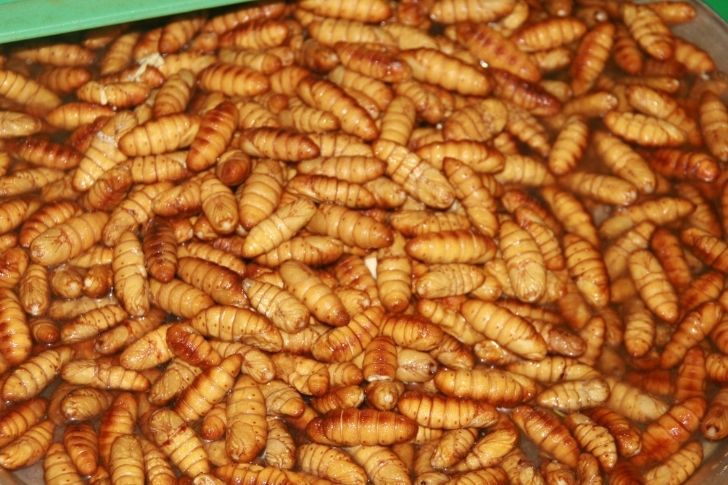
If there was a delicacy that is akin to a double-edged sword, coconut worms are a good contender for that title.
Coconuts are one of the many wonder-fruits in the world thanks to the wide range of health benefits they provide – it also helps reduce blood sugar levels, which is very useful for those with diabetes. And like its fruit counterpart, coconut worms also carry many benefits for those who eat them, like their high quantities of minerals and vitamins. However, like other destructive pests, coconut worms burrow through trees, eventually depleting the remaining supply of coconuts in a plantation. Because of this, coconut plantations are one of the riskier investments someone can make thanks to these coconut worms – like a double-edged sword, its benefits are as strong as its drawbacks.
Frog Legs – France
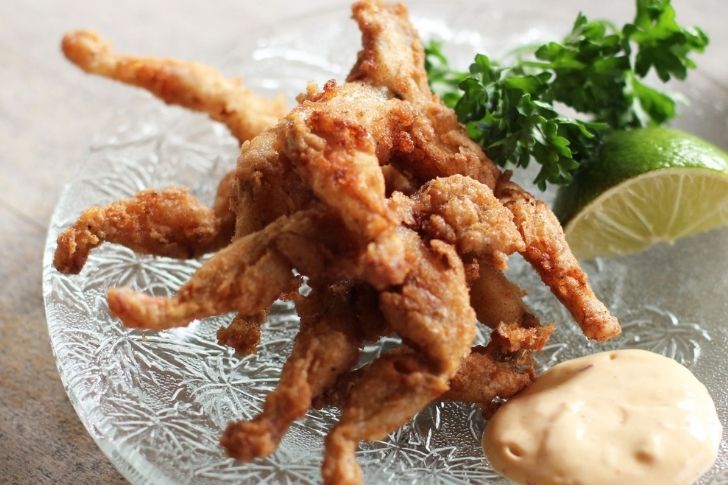
Frog legs are a relatively weird dish. Besides its name, frog legs are often fried, making them look like fried chicken legs. They also tend to taste like fish – in terms of taste, it’s like they fall in the middle, between fish and chicken.
Though many countries now welcome the delicacy in their daily lives, frog legs are often a well-known cuisine in France and China. And instead of hunting for wild frogs, many businesses have spent a significant amount of their investment money toward farming frogs, making them cleaner and safer to cook. Like other white meat, frog meat is a good source of protein. They also contain low amounts of fat and cholesterol, making them an ideal meal to grill, boil, or steam.
Basashi Raw Horse Meat – Japan
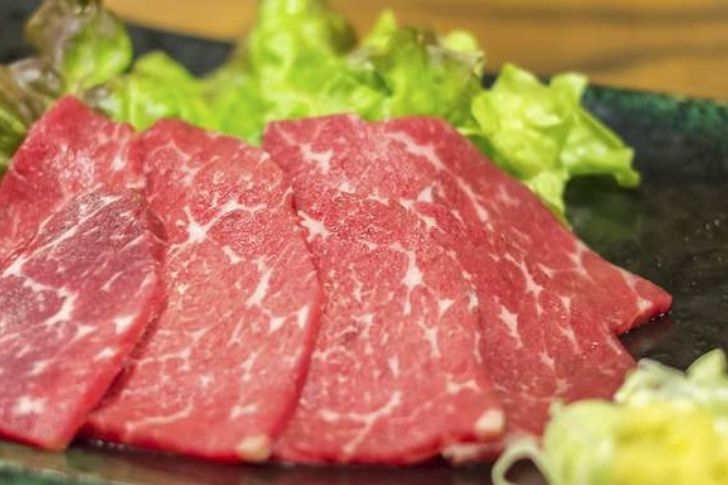
The food often associated with Japan is usually their sushi and sashimi – but don’t forget the Fugu blowfish. Well, besides serving raw fish, Japan apparently also serves raw horse meat.
Meaning “horse meat sashimi,” basashi is a Japanese cuisine special in Kumamoto, located in the island of Kyushu. Although the meat is served in various restaurants around the island, it’s often considered common knowledge to spend your credit card on the best restaurants, which are undoubtedly the ones that serve top-quality horse meat. Most of the time, the cuisine is served cold, dipped in soy sauce, and accompanied by a side of garlic or Japanese horseradish. And, of course, while you’re eating your meal in one of the finest restaurants in Japan, you might as well pair it with a nice cup of saké.
Baby Eel – Spain
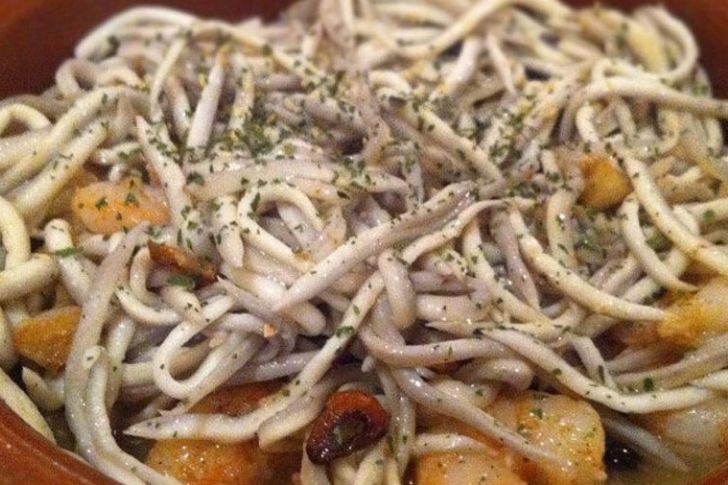
What used to be common food for the Spanish, baby eels are now considered one of the more expensive cuisines found in top-class restaurants.
Often called “Angulas” in Spain, these eels are usually cooked when they are around 2 to 3 years old – before they become as big as their older, electricity-emitting siblings. At that age, these baby eels are often 8 centimeters in length and are as thick as spaghetti strands. And although they used to be an everyday meal that the Spanish enjoyed in the earlier years of their history, the price of angulas eventually skyrocketed when more top-class restaurants started adding them to their menus. As a result, angulas are now one of Spain’s most expensive cuisines – its high price also helps moderate the consumption of this near-endangered species.
Khash – Middle East, East Europe, and Turkey
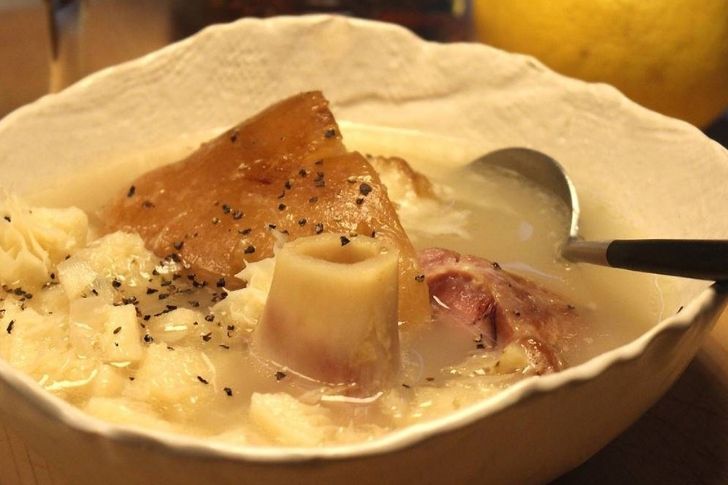
Another meal that has withstood the test of time, khash, is now one of the many established meals in the Middle East, East Europe, and Turkey, and can be eaten at any time of the year.
With the first discovery of this delicacy dating back to the 12th century, this Armenian dish is a stew made from cow’s head and feet and was the go-to meal of people who had to eat during the winter season when food supplies were close to running out. Eventually, as years came and went, khash became a meal anyone can partake of at any time of the year. It is said to be helpful against a cold and a hangover. Guess it’s safe to give it credit for being similar to the widely-loved chicken soup.
Escamol – Mexico
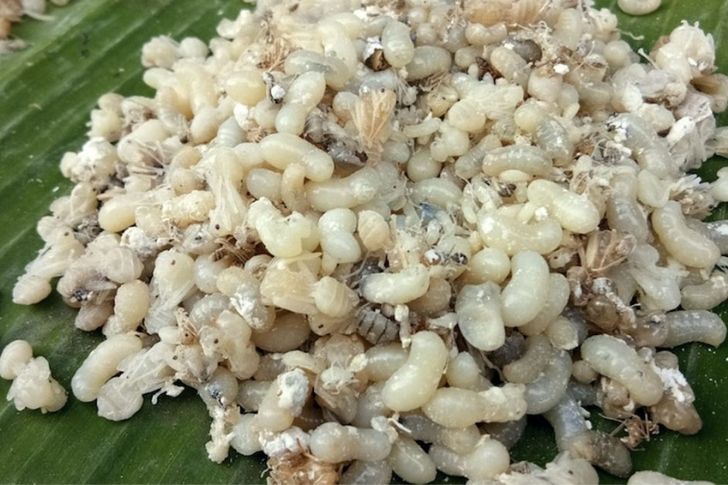
The Mexican cuisine, escamol, is composed of edible ant larvae and pupae. And unlike the Armenian khash, Mexico’s escamol is quite the pricey delicacy. It is only available between February and May. It is typically added to tacos and omelets but can be eaten on its own.
Before many of the world’s achievements were made, like the utilization of electricity, automobiles, and the internet, escamol was already a delicacy that the Aztec civilization ate and enjoyed. Though many years and cultures have passed, escamol, which often tastes buttery and nutty, is still quite a loved meal in Mexico and is even a celebration food for some areas during the Easter season. So if there’s anything certain about this age-old recipe, it’s that it will surely be a tasty cuisine that will carry a hint of history with every bite.
Tripe – Worldwide
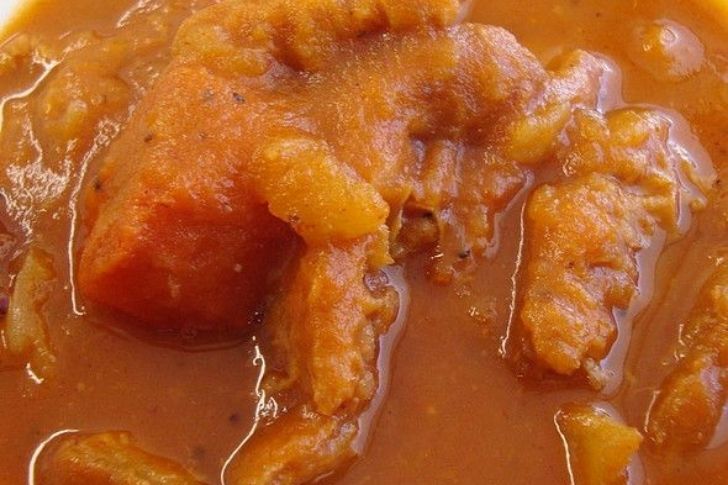
It has become a well-known fact that animal organs are a good source of nutrition for our bodies. Well, if you’re ever interested in adding another meal to your menu, may we suggest some tripe?
Like haggis, tripe is a meal made from an animal’s stomach – often from cattle and sheep – and is usually an essential ingredient to many types of sausages and soups. With historical accounts of this meal going as far back as the early part of Britain’s history, tripe was often the go-to dish for working-class men who were trying to find ways to have a good meal while saving money for their home and personal loans. However, tripe has also found a place in many cuisines worldwide, including in the Philippines’ goto, France’s andouille, and China’s bao du.
Mopane Worms – Southern Africa
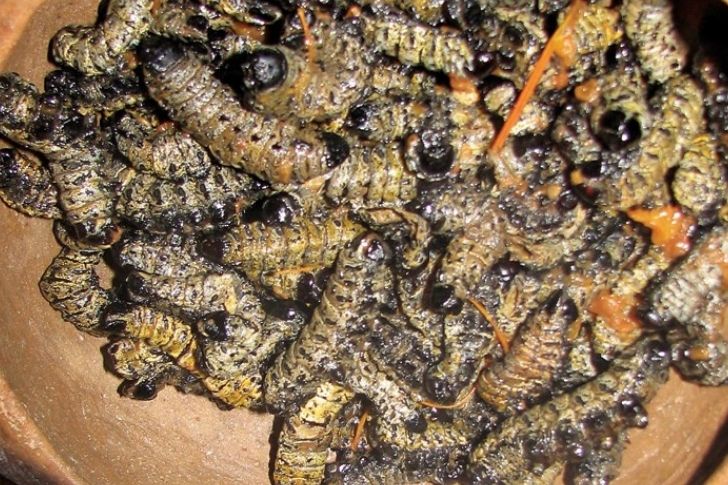
Entomophagy is the practice of eating insects. It’s another scientific word that we can welcome to our memory banks. It is basically a fancy way of saying “the eating of edible bugs and insects.”
Mopane worms, although small in size, are one of the biggest investments in the food industry of South Africa – they’re also exported to some European countries. Their name came from the fact that they consume the leaves found on mopane trees. Mopane worms are often squeezed off their juices before being dried under the sun – they can also be boiled. Mopane worms contain three times the protein content that one can get from beef and they are often served as a crispy snack or as part of a yummy stew. Despite that they sound disgusting to eat, they can, nonetheless, be part of a healthy diet.
Spam – Worldwide

Perhaps one of the relatively more popular foods in this article, spam has found its way to many markets worldwide, although it often gets a mixed reception.
A type of canned food often is composed of ground pork and processed ham, spam has been a meal for many people over countless years and has also been given credit for providing soldiers with sustenance during the Second World War. Eventually, spam found its way to many people’s diets and turned into something that is often eaten during breakfast or as part of a sandwich – though these aren’t the only ways to eat spam, for sure. Though one thing’s certain, despite some of the hate it has received, spam has provided food for many people over the years and is showing no signs of stopping anytime soon.
Foie Gras – France
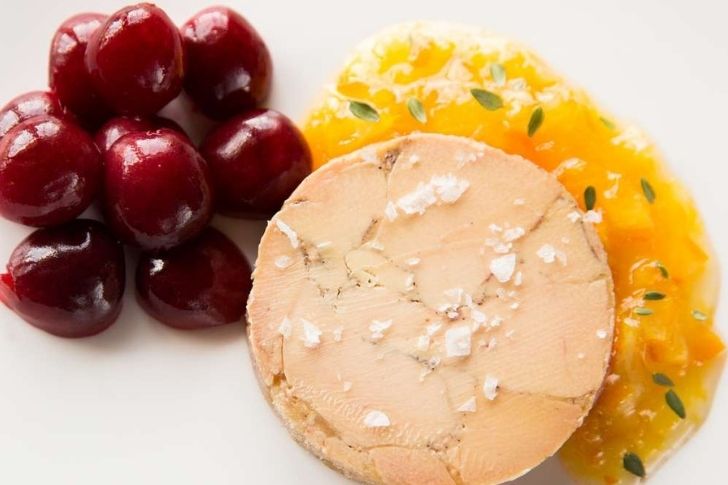
Foie Gras is usually served in small amounts, and it is one of the world’s most luxurious foods – it is often sold for a premium, and the prices can be as high as $125 for 2 pounds.
With its name meaning “fatty liver” in French, foie gras is a cuisine made from the liver of a duck or goose that had gone through the gavage feeding process – the process helps enlarge their livers up to ten times their original size. Although the gavage feeding process has received more than its fair share of controversy over the years, many scientists have spent a significant amount of investment money towards the development of a safer alternative, which they say will make do without the gavage feeding process entirely. Because of its status as one of the world’s most luxurious foods, foie gras is surely a cuisine worth trying.
Kangaroo – Australia
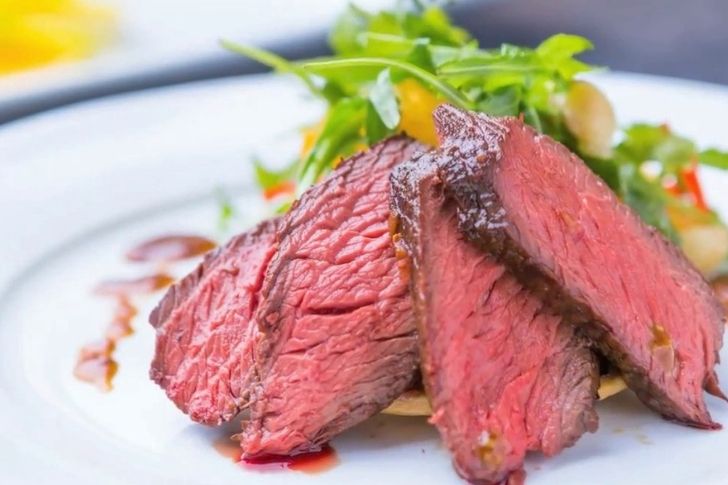
The kangaroo is one of the many animals people associate with Australia. They also can be quite the meal to the people living in the Land Down Under.
Although it is a delicacy that provides health benefits – it has anti-carcinogenic and anti-diabetic properties – kangaroos are strongly protected by Australia’s legal system, and the government only allows five of its 48 species to be harvested. Through this, the food market is ensured to have an ample supply of kangaroo meat, all while preventing the species’ endangerment. Since kangaroo meat is rich in protein and iron and contains low quantities of fat, it’s safe to say this Australian dish is, without a doubt, a hearty meal worth shaving a few points off your credit card.
Starfish – China
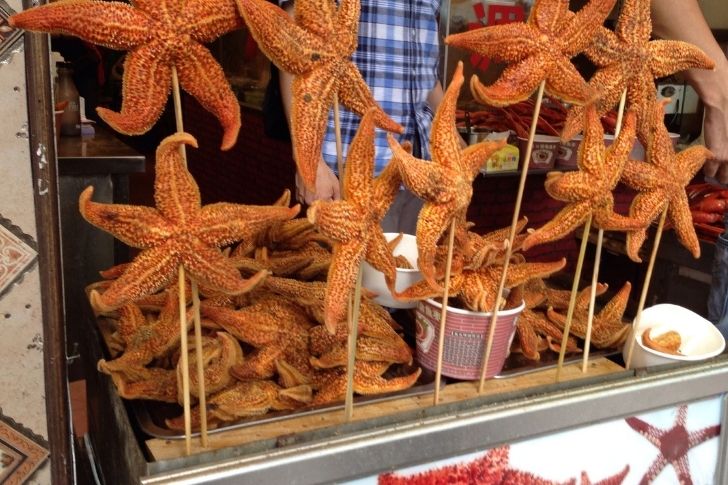
Now, this is a meal that will surely come as a surprise to many people, mainly because a majority of the world’s population isn’t accustomed to eating a starfish. Indeed, most people don’t even know that starfish can actually be eaten.
The starfish is one of the many kinds of seafood served in China. Most of the time, the starfish is dried before it is ready for consumption – though others prefer to fry it as well. After drying, the starfish is opened for its meat, which apparently smells like the beach during the low-tide season. However, because some starfish are considered poisonous, only a few chefs can take credit for being able to prepare them for eating – pretty similar to Japan’s elite fugu chefs.
Heart – Worldwide
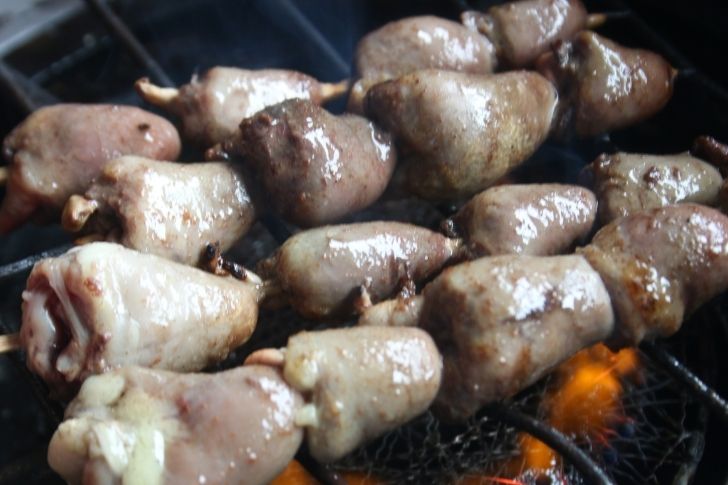
Although this is a relatively common dish that is served worldwide, eating an animal’s heart is still somewhat off-putting for some people.
Back in the day, when a fire was made with sticks and stones instead of gas, the partaking of animal organs became a part of many customs and traditions, who would use every part of an animal to prevent a shortage of food. Although they are often avoided nowadays, consuming animal organs does offer many health benefits. For example, the heart can be an excellent source of vitamins and nutrients – stuff that our bodies need – including zinc, iron, and vitamin B. Besides these benefits, the heart is also a pretty tasty meal, whether from a chicken, cow, or lamb.
Hákarl – Iceland
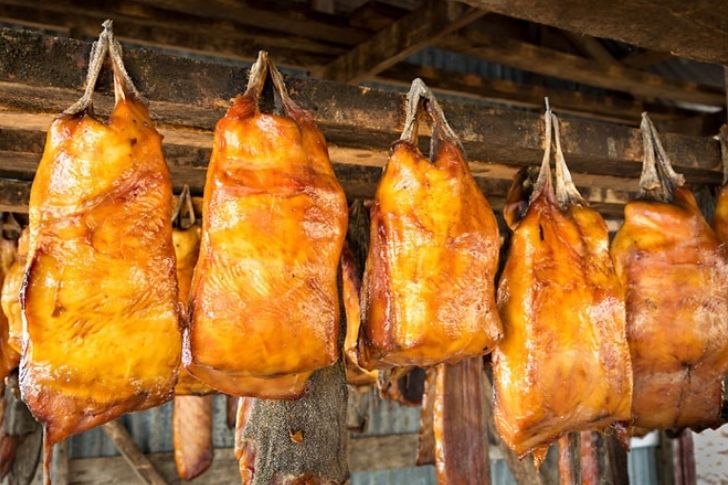
Despite that this Icelandic delicacy was able to withstand the strong test of time, it still might be something tourists and outsiders will want to avoid. It is, however, one of the many delicacies that Icelanders enjoy, in no small part because of its interesting history.
When the first Vikings set foot on the land now known as Iceland, their only stable food supply was the Greenland shark. Though the shark’s meat was deemed toxic for consumption, the Vikings developed a preservation method, the hákarl, to make it safe for the people to eat. By the end of the preservation process, the shark meat will give off a foul stench that outsiders, in particular, will remember for the rest of their lives – to some degree, this is what makes the hákarl an interesting, albeit stinky, dining experience.
Hormigas Culonas Big Butt Ants – Colombia
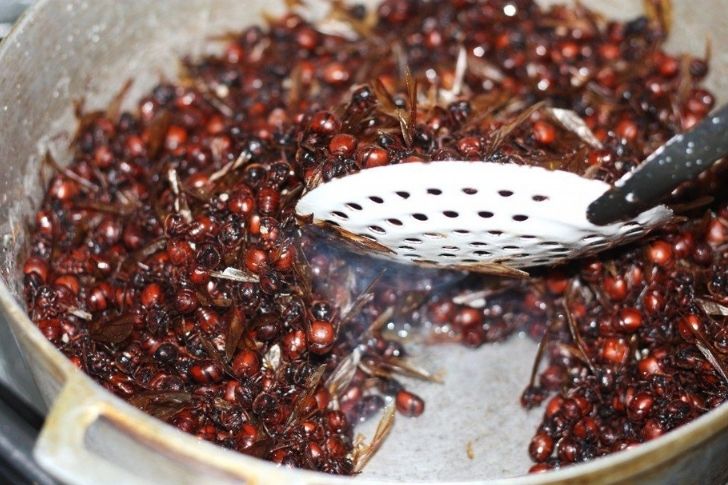
Perhaps this Colombian meal is ideal for that one artist who sang the “I like big butts, and I cannot lie” song – it is a meal that his other brothers surely cannot deny.
With this delicacy taking credit for being nature’s very own popcorn, the Hormigas Culonas, which translates to “big-bottomed ants,” is quite a delicacy that can only be found in Colombia, making it an experience every tourist shouldn’t miss out on during their stay. Furthermore, in Colombia, finding a place that serves hormigas culonas will be an easy task since many restaurants and street vendors serve their own version of the meal. Anyone and everyone can give this a try! Although they’re ants, they surprisingly taste like popcorn and have an aftertaste similar to fried chicken crisps – which sounds like a good replacement to peanuts, too.
Shiokara – Japan
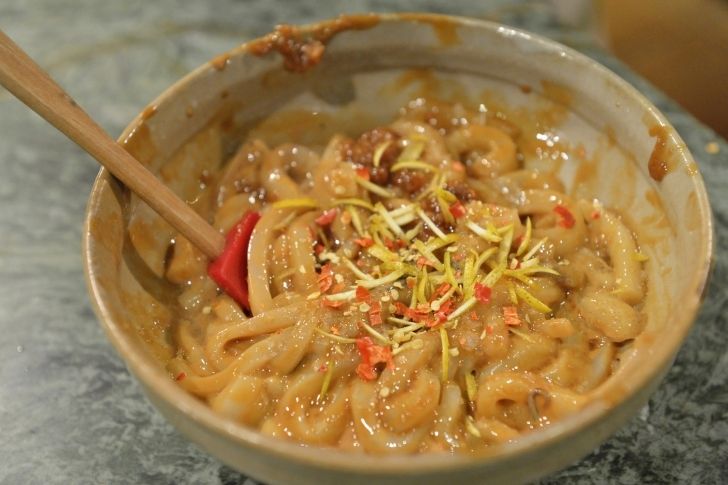
Another member of Japan’s list of weird cuisines, the shiokara consists of raw fish and fish guts that were fermented in salt. It sounds absolutely disgusting, we know, but many say it tastes great.
A meal that has existed since Japan’s early years, the shiokara is a dish that can be preserved for long durations of time due to its high-salt content – the new method of fermentation, on the other hand, will allow the meal to only be stored below 10-degree-Celsius temperatures due to its low-salt content. Most of the time, the meal is paired with either white rice or butter since these can help balance-out the shiokara’s flavor by making the saltiness thinner and giving its other flavors a chance to bloom in the consumer’s taste buds. Of course, a shiokara meal can also be paired with some fine saké.
Southern Fried Rattlesnake – United States
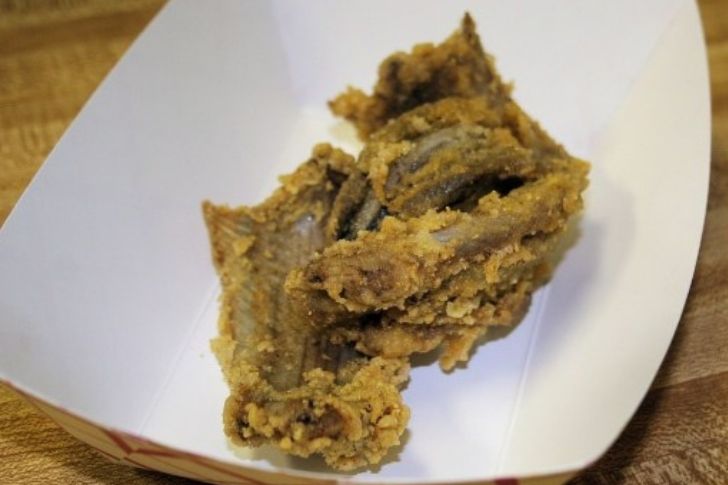
Who would’ve thought that snakes can be made to be delicious? Well, it looks like the person who first tried frying a rattlesnake deserves credit for giving us the idea.
Though some people have already had the chance to try this meal, hunting a rattlesnake isn’t an easy task that just anyone can do – that’s where hunters and meat shops come in handy. Before frying the snake, it is first skinned – it can also be dipped overnight in buttermilk to help add to the flavor while making the meat even more tender. After this, the process for making fried rattlesnake is similar to making fried chicken, though its taste is often compared to other types of meat, like veal, quail, fish, rabbit, and even canned tuna, of all things.
Tequila Worm – Mexico

So far, in this article, we mentioned the coconut worm and mopane worm as delicacies that provide health benefits for consumers. But there is another worm that deserves the same credit. It’s the gusano, a worm that can be found in a few bottles of mezcal.
Mescal is a liquor that is known to be tequila’s not-so-popular sibling – both spirits go through the same process of distillation, and they both involve the agave plant. However, mescal bottles are more often sold without any gusano larvae in them. Though eventually, in 1940, Jacobo Lozano Páez discovered that these worms added taste to mescal. He made investments in the liquor business, and it involved a lot of worms in bottles. Many people, however, consider this worm to be a marketing gimmick to increase the public’s interest in the liquor.
Jing Leed – Thailand
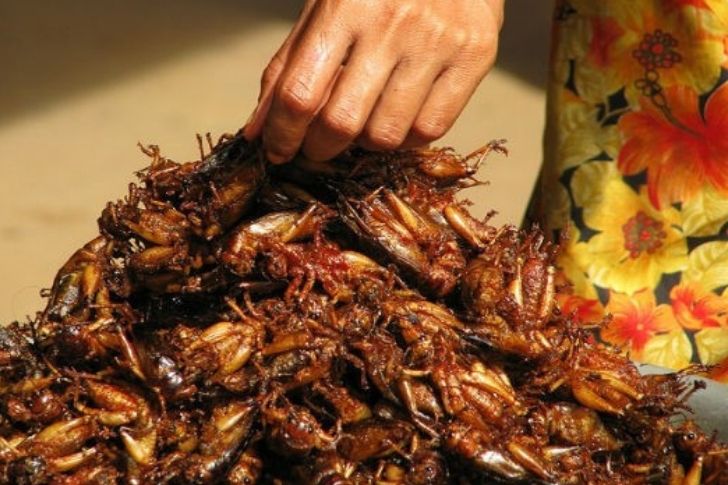
Thailand is a country that is known for having weird snacks being sold on the streets — snacks that, more often than not, include insects.
Among the street foods that the Thai people serve to locals and tourists are ones that include various insects and worms. Known to the locals as jing leed, crickets are often fried and served as snacks that consumers can eat alone or with a drink. Though you can find them being served by street vendors, it is usually ideal to buy these exotic snacks at many of Thailand’s Temple Fairs, where the amount you spend gets converted into investment money for the temples. As a result, not only will you be trying a new delicacy, but you’ll also be helping to preserve a piece of Thailand’s rich culture – a win-win scenario, for sure.
Witchetty Grub – Australia
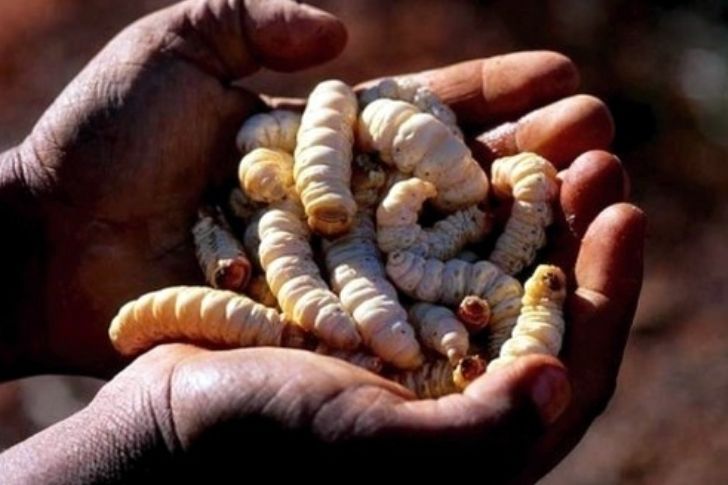
If the durian fruit had a worm counterpart, it would be a witchetty grub. Though it looks hideous, the witchetty grub is a tasty treat that one can try, raw or cooked!
This delicacy can trace its roots to Australia’s indigenous tribes, where things like online classes and the internet aren’t all that common. The witchetty grub slowly became one of Australia’s must-try delicacies. The word “witchetty” is used as a synonym for “fat,” and witchetty grubs are worms that grow to sizes comparable to one’s thumb. When eaten raw, witchetty grubs are said to taste like almonds. However, this protein-rich snack can also be cooked or barbecued and they are often reported to taste similar to chicken or peanut-sauced shrimp – it is of course, a meal worth trying.
Vegemite – Australia

Among Australia’s many delicacies, perhaps the Vegemite is the most famous, thanks to the fact that it became the subject of a few jokes on the internet.
With the age-old principle of leaving nothing to waste, the company, Kraft Foods Limited, made investments in utilizing the leftover yeast extracts found after beer production and sold it as vegemite, the product that many people either love or hate today. Most of the time, Vegemite is lightly spread on toast, but it can also be an essential ingredient for meat and potato pies. Although Vegemite is considered an acquired taste, one cannot deny the health benefits it offers for consumers. After all, it does contain high quantities of vitamin B, iron, protein, and carbohydrates — and this is reason enough to include it in your diet.
Locusts – Africa, Middle East, Asia
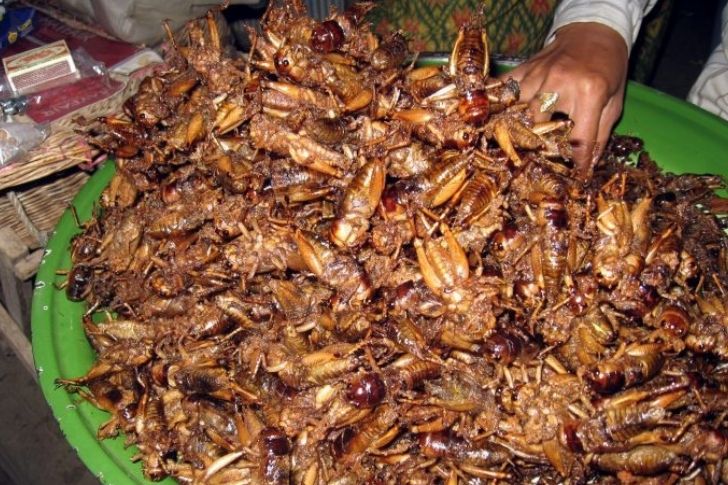
Other insects were already mentioned in this article, but it is still quite impressive to know that locusts — those creepy-crawlies — contain a good amount of the nutrition that the body needs.
Locusts often fly around in relatively small groups, though some also fly in swarms when their surroundings exceed 50-degree-Celsius temperatures. And since exterminating them is considered a taxing job for some, people eventually came up with an alternative: eat them. Locusts have become quite a delicacy in many countries and they can be prepared in various ways, including by frying and drying. Some countries have been serving them for more than a few decades. Furthermore, though these critters are often known for their destructive effect on the environment, eating these protein-rich locusts can give several health benefits to the body – they also help reduce the risk of heart disease.
Pig’s Tail – South America, Puerto Rico
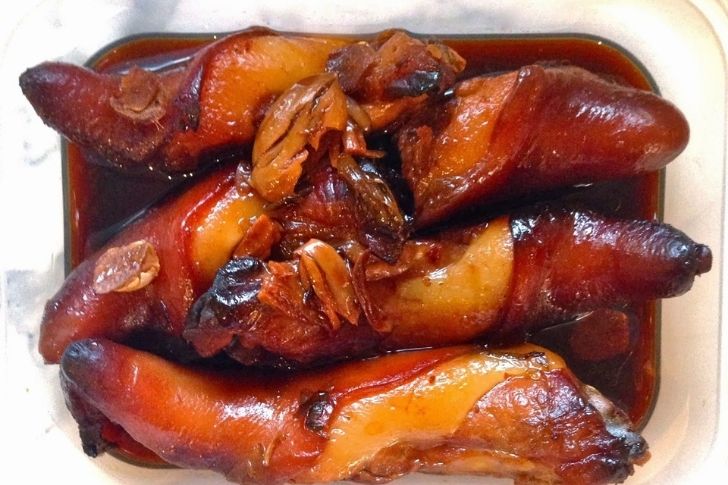
It was — and, to some degree, still is — a common practice among indigenous people to consume an animal whole and not leave anything to waste. So, with that in mind, it comes as no surprise that even the tail of a pig can become quite a delicacy – hats off to the person who started this recipe!
Indeed, there exist many pig’s tail recipes In the areas of South America and Puerto Rico. In Puerto Rico, pig’s tail is served raw, put into sandwiches, and paired with cheese and mustard. Meanwhile, in other places, a pig’s tail is also used to flavor stew and soups. They can be fried or roasted in barbecue sauce. In fact, there are so many ways to cook pig’s tail that a whole book can be written on the subject.
Huitlacoche – Mexico
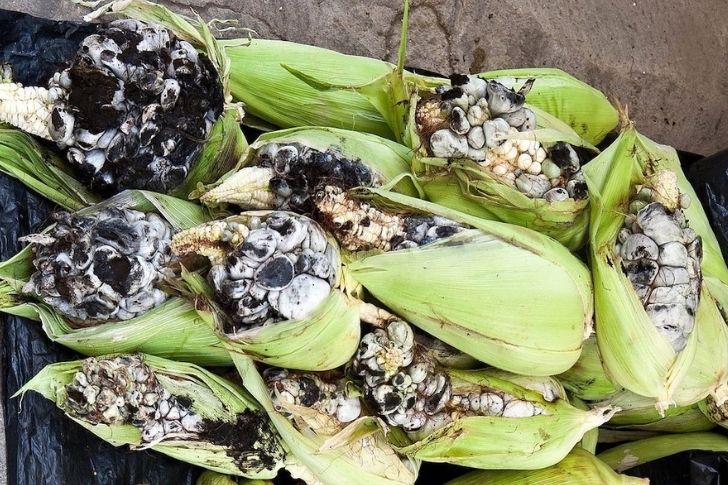
Sometimes, with a little change in perspective, bad things can also turn into good things. With that said, let’s talk about Mexico’s huitlacoche.
Back in the days when homes weren’t supplied with electricity, the Aztecs discovered the huitlacoche, which is now one of Mexico’s many age-old delicacies. The huitlacoche is a fungus that grows on corns, causing their kernels to swell and become mushroom-like in appearance. Although fungi swarming one’s crops is often considered bad news, the huitlacoche is welcomed with open arms in Mexican farms and sold in markets by street vendors. Furthermore, this delicacy provides the health benefits one can typically get from corn and mushrooms, which is all thanks to its high-quantities of protein and lysine, an amino acid often non-existent in corn – it’s like hitting two birds with one stone.
Salo – Ukraine
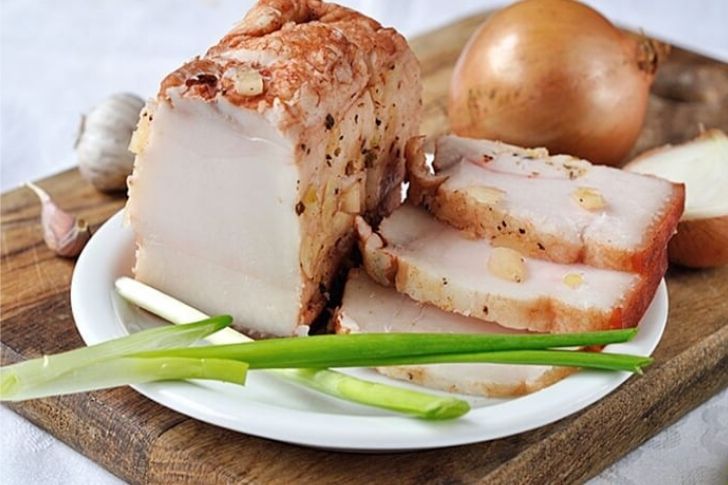
Although a fair amount of food mentioned here has its share of health benefits, let’s talk about something more on the luxury side of things.
Salo is Ukraine’s national food and is also somewhat of a craze for its people, so much so that some have allocated a portion of their investment money for hosting festivals in honor of this delicacy: the Salo Festival, which happens every February and the With Love To Salo festival, which happens every September. Although it may look like cheese at first glance, the slabs that create salo is made entirely of white pork fat – so people keeping an eye on their calories better be wary of this. Although a few chefs in Ukraine have made desserts out of this, salo is often recommended to be eaten with garlic, onions, and be accompanied with vodka.
Jellyfish – Southeast Asia
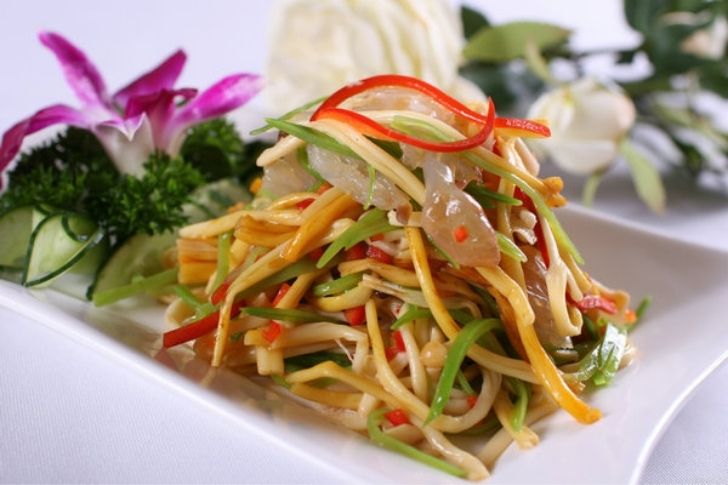
People avoid getting into contact with jellyfish out of fear of being stung by its toxic tentacles. However, some restaurants around Southeast Asia prefer to look for these jellyfish and include them in their menu for curious customers to try.
Many restaurants around Southeast Asia have been serving jellyfish for quite some time now – and each has its own version of the dish. Among these versions are Japan’s jellyfish sushi, jellyfish ice cream, and Thailand’s noodles made from jellyfish. Although jellyfish-flavored ice cream is surely an intriguing taste to be experienced, it’s safe to say that safely partaking in any jellyfish-related meal is, without a doubt, worth the credit card expense. You only live once, after all, so you might as well try eating jellyfish.
Muktuk – Greenland
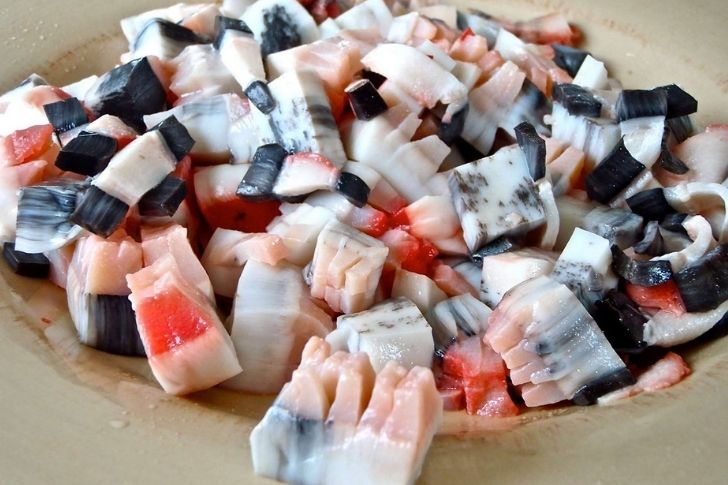
It is often the unusual things that have a deep history to them. For the Inuits, the muktuk is a delicacy that has deep roots in their culture and religious beliefs.
The Inuits are a group of skilled hunters who worship Sedna, the goddess of the sea. Throughout the earlier years of their history, the Inuits would often hunt sea creatures, like whales, and use every part of it to make their tools or food – this was their way of appeasing the sea goddess. Through this, the Inuit delicacy, muktuk, was created. Muktuk is often served raw in cubed-slices and is composed of the skin and blubber of a whale. This yummy delicacy is also rich in nutrients like Vitamin C, which provide them the gas they need to fuel their bodies for the next hunt.
Oyster – Worldwide
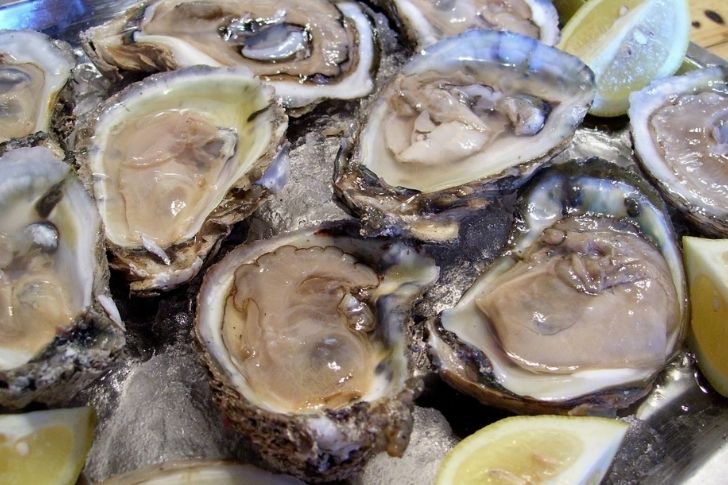
Although this is served in many restaurants worldwide, the oyster is a relatively strange cuisine that many still prefer to avoid at all costs.
Besides the many investments made in the oyster trade for the pearls, oysters are quite the delicacy, too, and they can be had in almost any country you can think of. Even so, oysters still need to be prepared with the utmost care to ensure the safety of those who will partake in this yummy meal. Besides serving them raw, oysters can also be steamed, baked, fried, and stewed, to name just a few ways of preparing it. Well, one thing’s for sure, whatever method it may be, having an oyster meal is something very enjoyable.
Each country has a culture and history worth telling. And, sometimes, these stories are still reflected in the many traditions that are followed today, including the many delicacies they make and share. Well, whatever story it may be, every culture is, without a doubt, interesting and surely worth discovering. After all, the world is your oyster.

